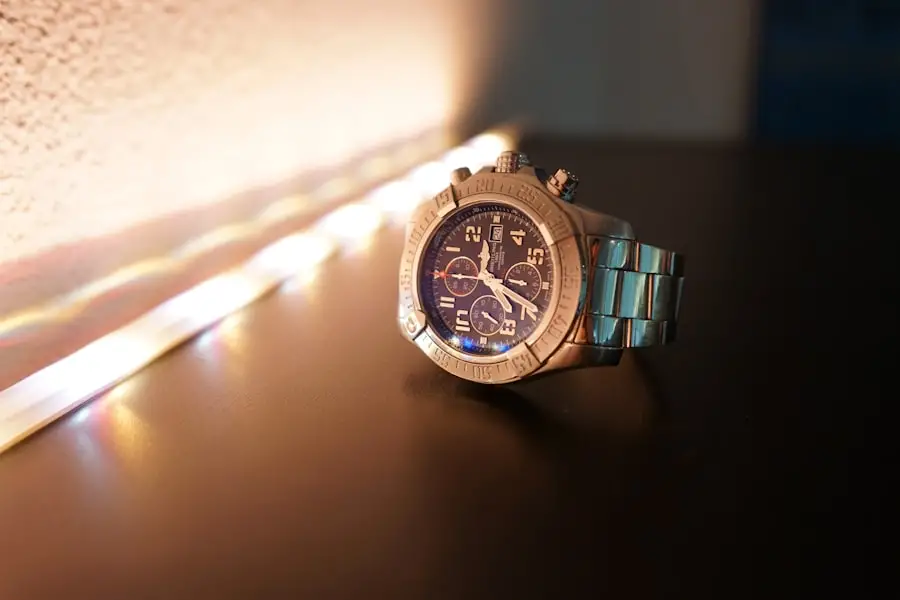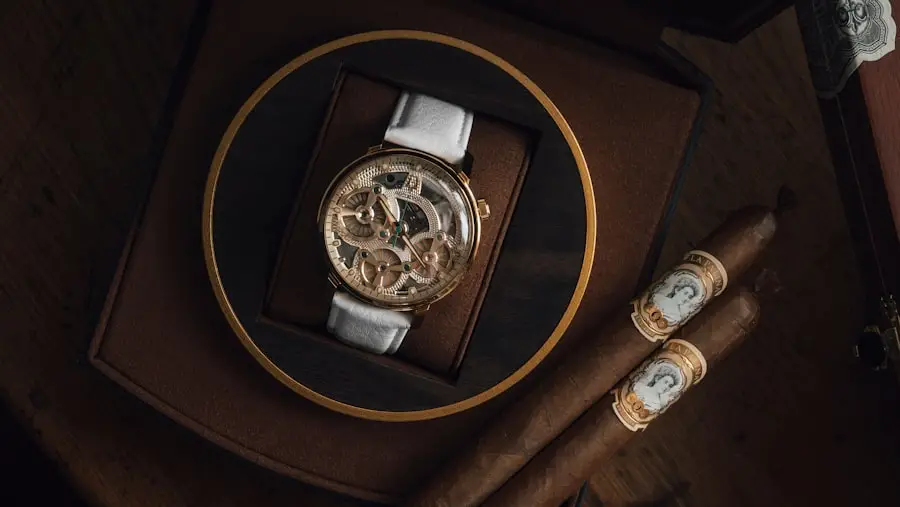When we think about luxury watches, the first thing that often comes to mind is their exquisite craftsmanship and the materials used in their construction. Polishing these materials is not merely a cosmetic enhancement; it plays a crucial role in maintaining the watch’s overall integrity and aesthetic appeal. Over time, even the most meticulously crafted timepieces can accumulate scratches, smudges, and tarnish, which can detract from their beauty and value.
By regularly polishing our luxury watches, we ensure that they continue to exude the elegance and sophistication for which they were designed. Moreover, polishing serves a functional purpose beyond aesthetics. It helps to protect the underlying materials from corrosion and wear, thereby extending the lifespan of our cherished timepieces.
A well-polished watch not only looks good but also functions better, as dirt and grime can interfere with the movement of the watch. Therefore, we must recognise that polishing is an essential aspect of watch maintenance that contributes to both the visual appeal and longevity of our luxury watches.
Summary
- Polishing luxury watch materials is important for maintaining their shine and luster, as well as preserving their value.
- Steel, gold, and titanium are the most common materials used in luxury watches, each with their own unique characteristics and polishing requirements.
- The polishing process for steel watches involves using abrasive materials to remove scratches and restore the original finish.
- Gold watches require delicate polishing techniques to avoid damaging the soft metal and maintain its luxurious appearance.
- Titanium watches need special attention during the polishing process to prevent altering the metal’s natural colour and finish.
The Characteristics of Steel, Gold, and Titanium
When we delve into the world of luxury watches, we encounter a variety of materials, each with its own unique characteristics. Stainless steel is perhaps the most common material used in watchmaking due to its durability and resistance to corrosion. It possesses a sleek, modern appearance that appeals to many watch enthusiasts.
The ability to achieve a high polish on stainless steel enhances its reflective qualities, making it a popular choice for both casual and formal timepieces. Gold, on the other hand, brings an air of opulence and prestige to any watch. Available in various alloys such as yellow, white, and rose gold, this precious metal is prized for its lustrous finish and intrinsic value.
However, gold is softer than steel, making it more susceptible to scratches and dents. This characteristic necessitates a different approach to polishing, as we must be cautious not to remove too much material during the process. Titanium has emerged as a popular alternative in recent years due to its lightweight nature and exceptional strength.
It is highly resistant to scratches and corrosion, making it an ideal choice for those who lead active lifestyles. However, titanium presents its own challenges when it comes to polishing. Its unique properties require specialised techniques to achieve a desirable finish without compromising its structural integrity.
The Polishing Process for Steel Watches

Polishing stainless steel watches involves a systematic approach that ensures a flawless finish while preserving the watch’s design features. We begin by assessing the condition of the watch, identifying any scratches or blemishes that need attention. Using a soft cloth or a specialised cleaning solution, we gently clean the surface to remove any dirt or oils that may have accumulated over time.
Once the watch is clean, we can proceed with the polishing process. For minor scratches, we often use a fine polishing compound along with a soft buffing wheel. This method allows us to carefully blend the scratched area with the surrounding surface without removing excessive material.
For deeper scratches, we may need to employ a more aggressive approach using sandpaper or abrasive pads, gradually working our way up to finer grits to achieve a smooth finish. After polishing, it is essential to clean the watch again to remove any residue from the polishing compounds. We then apply a protective coating or wax to enhance the shine and provide an additional layer of protection against future scratches.
This meticulous process not only restores the watch’s original beauty but also reinforces our commitment to maintaining its value.
The Polishing Process for Gold Watches
Polishing gold watches requires a delicate touch due to the softness of the metal. We must approach this process with care to avoid removing too much material or altering the watch’s design features. Initially, we start by cleaning the watch with a gentle soap solution and a soft brush to remove any dirt or grime that may have built up over time.
Once cleaned, we can assess the extent of any scratches or imperfections on the gold surface. For light scratches, we often use a gold polishing cloth specifically designed for this purpose. These cloths contain micro-abrasives that can effectively buff out minor blemishes without damaging the underlying metal.
For deeper scratches or tarnish, we may opt for a specialised gold polish applied with a soft cloth, taking care to follow the grain of the metal. After polishing, it is crucial to thoroughly clean the watch again to remove any polishing residue. We may also consider applying a protective coating designed for gold to help maintain its lustre and prevent future tarnishing.
This careful approach ensures that our gold watches retain their luxurious appearance while safeguarding their value over time.
The Polishing Process for Titanium Watches
Polishing titanium watches presents unique challenges due to the metal’s hardness and resistance to scratching. However, with the right techniques and tools, we can achieve an impressive finish that highlights titanium’s natural beauty. We begin by cleaning the watch thoroughly using a mild soap solution and a soft cloth to eliminate any dirt or oils.
Once clean, we assess any scratches or imperfections on the titanium surface. For light scratches, we often use a fine abrasive polish specifically formulated for titanium. This type of polish allows us to gently buff out minor blemishes without compromising the integrity of the metal.
For deeper scratches, we may need to employ more aggressive methods such as using fine-grit sandpaper or specialised titanium polishing pads. After completing the polishing process, it is essential to clean the watch again to remove any residue from the polishing compounds. We may also consider applying a protective coating designed for titanium to enhance its shine and provide additional protection against future wear and tear.
By following these steps diligently, we can ensure that our titanium watches maintain their sleek appearance while standing up to daily use.
Maintaining the Shine and Luster of Luxury Watches

Maintaining the shine and luster of our luxury watches goes beyond occasional polishing; it involves adopting daily habits that protect these exquisite timepieces from damage. One of the simplest yet most effective ways to preserve their beauty is by storing them properly when not in use. We should keep our watches in a dedicated case or box lined with soft fabric to prevent scratches from other items.
Regular cleaning is another essential aspect of maintenance. We should make it a habit to wipe down our watches with a soft cloth after wearing them to remove any sweat or oils that may have accumulated on the surface. For more thorough cleaning, we can use a mild soap solution and a soft brush, ensuring that we pay special attention to areas where dirt tends to accumulate, such as between links in metal bracelets.
Additionally, we should be mindful of where we wear our luxury watches. Avoiding exposure to harsh chemicals or extreme conditions can significantly prolong their lifespan and maintain their shine. By adopting these simple practices, we can ensure that our luxury watches remain as stunning as they were on the day we acquired them.
Professional Polishing Services for Luxury Watches
While DIY polishing can be effective for minor touch-ups, there are times when seeking professional polishing services is advisable. Professional watchmakers possess specialised tools and expertise that allow them to restore our luxury watches to their original glory without risking damage. They are trained in various polishing techniques tailored specifically for different materials, ensuring that each watch receives the care it deserves.
When considering professional services, it is essential to choose a reputable watchmaker or service centre with experience in handling luxury timepieces. They should have access to high-quality polishing compounds and equipment designed for specific materials such as steel, gold, or titanium. Furthermore, professional services often include additional benefits such as thorough inspections and maintenance checks that can identify potential issues before they become significant problems.
Investing in professional polishing services not only enhances our watches’ appearance but also helps maintain their value over time. A well-maintained luxury watch is more likely to retain its worth in the market, making professional care an essential consideration for any serious collector or enthusiast.
Tips for DIY Polishing of Luxury Watches
For those who prefer a hands-on approach to maintaining their luxury watches, there are several tips we can follow for effective DIY polishing. First and foremost, we should always start with a thorough cleaning of the watch using a gentle soap solution and a soft cloth or brush. This step ensures that we do not inadvertently scratch the surface while polishing.
When selecting polishing compounds or cloths, it is crucial to choose products specifically designed for use on luxury watches. Using inappropriate materials can lead to further damage rather than restoration. For stainless steel watches, fine polishing compounds paired with soft buffing wheels work well for minor scratches; however, we should always test any product on an inconspicuous area first.
For gold watches, using specialised gold polishing cloths can help maintain their lustre without risking damage. When it comes to titanium watches, fine abrasive polishes formulated for titanium are essential for achieving optimal results without compromising durability. In conclusion, while DIY polishing can be rewarding and cost-effective, we must approach it with caution and care.
By following these tips and understanding our watches’ unique materials and characteristics, we can successfully maintain their beauty and functionality for years to come.
In the realm of luxury watches, the choice of materials plays a pivotal role in both aesthetics and functionality. An intriguing article that complements the discussion on how steel, gold, and titanium respond to polishing is the exploration of TAG Heuer’s innovative use of materials. This piece delves into the brand’s commitment to blending traditional craftsmanship with modern technology, highlighting how they utilise various materials to enhance the durability and allure of their timepieces. By understanding the nuances of different materials, watch enthusiasts can better appreciate the meticulous artistry involved in creating these exquisite accessories.


